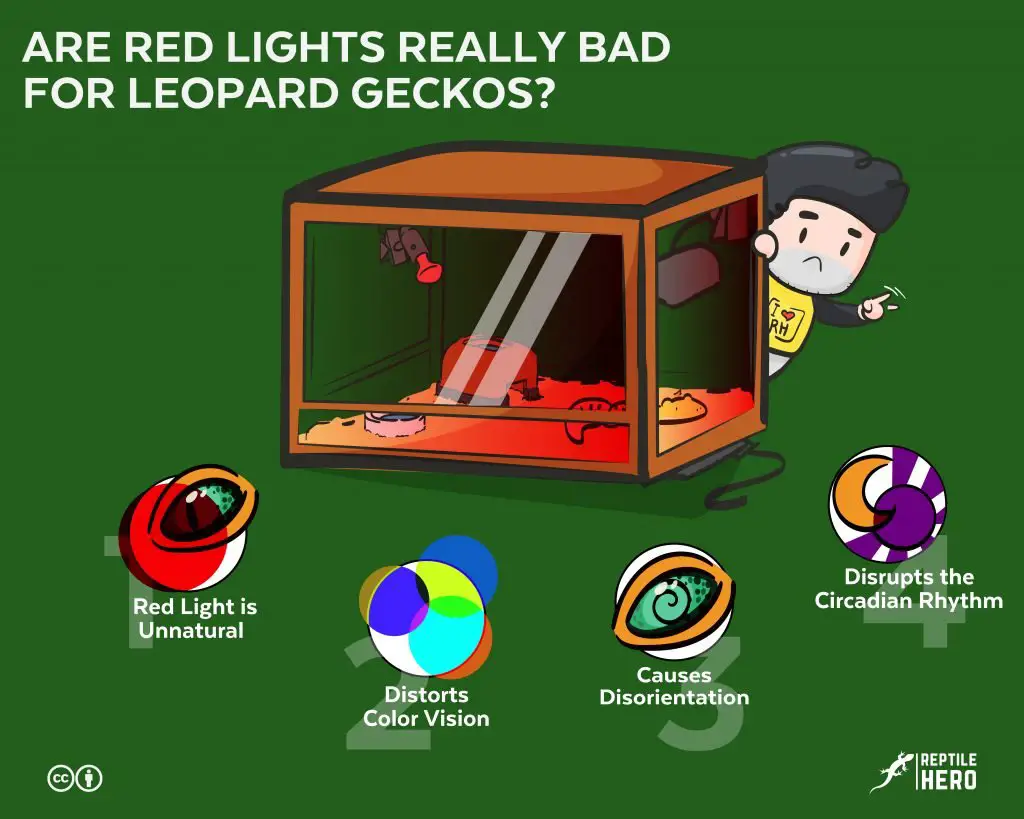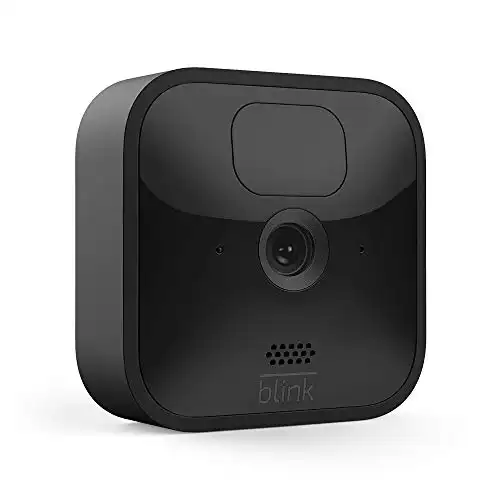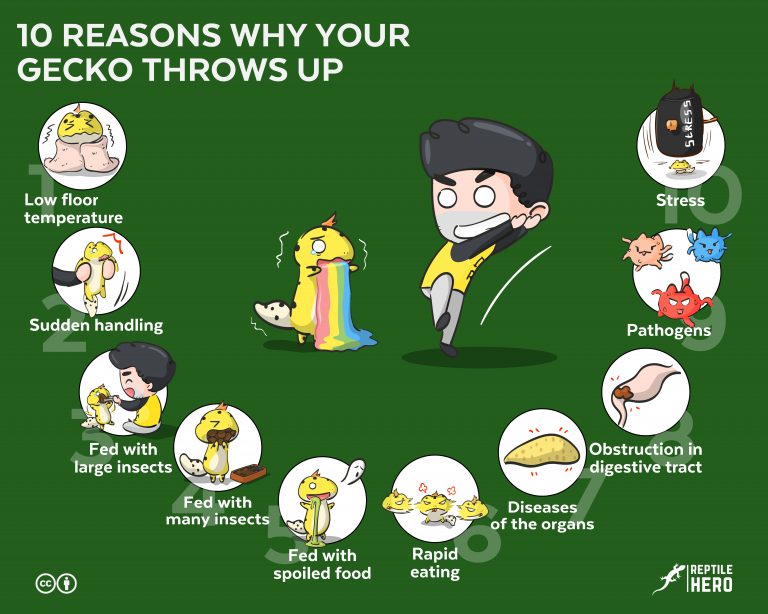Are Red Lights Really Bad for Leopard Geckos? [Not Exactly]
To this day, I still catch wind of some reptile enthusiasts harping about how red lights are either completely safe to use on their own or extremely dangerous for leopard geckos. However, even in their best intentions, neither of those statements are one hundred percent true or accurate!
Generally speaking, using regular red lights for leopard geckos is neither harmful nor beneficial. Nevertheless, red lights are not recommended for use with most reptiles because:
- It emits a highly unnatural color of light.
- It distorts color vision.
- It causes disorientation/stress.
- It disrupts the circadian rhythm.
Whenever the sun rises and sets, the light it emits has a considerably low correlated color temperature (CCT) which seems strikingly orange-red to us humans. Leopard geckos are known to be more active during those times—so why exactly are red lights not recommended?

Red Lights For Geckos? Controversy in the Reptile-Keeping Community
Okay, so—red lights, are they good or bad? Well, quite honestly, the answer is more complicated than that. Simply saying that red lights are good or that red lights are bad doesn’t paint a clear and complete picture of the issue at hand.
4 Reasons Why Experts Advise Against the Use of Red Lights
The four basic reasons why experienced keepers and field experts heavily discourage the use of red lamps as the sole light source for geckos, snakes, turtles, and many other reptiles are [1]:
- Providing a red lamp as the only light source is unnatural.
- Providing a red lamp as the only light source distorts full-color vision.
- Providing a red lamp as the only light source causes disorientation and/or stress.
- Providing a red lamp as the only light source disrupts the circadian rhythm.
Reason #1—Red Light Alone is Unnatural
This point should be readily obvious, however, many people seem to forget this fact.
First off, let’s put up the light emitted from red lamps against the light from the sun and the moon. The difference is immensely apparent: Neither sunlight nor moonlight is naturally red.
I even remember one of my friends saying that the only time a reptile’s environment would naturally seem blazing red is if its habitat is ablaze with fire.
So if you are planning to use red lights on their own for your gecko—regardless if it’s only for the day, at night, or 24/7—try to imagine what your life would be like in a world bathed in only red light.
Not a pleasant scenario, isn’t it?
Reason #2—Red Light Alone is Distorts Color Vision
Regardless of how old or how knowledgeable of science-based reptile husbandry you are, you are most probably familiar with those red-lit darkrooms used for traditionally developing photographs.
As you might imagine, every single thing in that room would be red, black, and other shades of the two.
Even if you are normally able to tell apart all the colors under the rainbow you will be unable to do so with a red lamp, on its own, as your light source.
Sure, it’s not like reptiles, and most animals for that matter, see colors the same way we do.
Nevertheless, they can still fundamentally perceive colors—just not as distinctly apart from each other.
Reason #3—Red Light Alone Causes Disorientation and/or Stress
Though mostly based on anecdotal accounts and deductive reasoning, experienced pet parents and breeders have noted that leopard geckos and other herps—collectively referring to both amphibians and reptiles—exhibit disorientation and/or stress from red light exposure.
Some say that adverse reactions to red lights are more apparent in juvenile geckos. Though they naturally eat more regularly than adults, they either have decreased appetite or stop eating altogether.
As far as I know, there are no formal studies or experiments on the matter available. So whether the red light is indeed the cause or not remains unclear.
Experts in herpetology, the branch of zoology focused on reptiles and amphibians, also add that using red lamps as an alternative light source during the day and/or night does not accomplish the intended purpose.
Red lights are far too dim to replicate sunlight and also far too bright to mimic moonlight.
Reason #4—Red Light Alone Disrupts the Circadian Rhythm
Does the term circadian rhythm ring a bell to you? Simply put, the circadian rhythm is the internal body clock living organisms possess which has a time frame highly similar to one whole day or 24 hours [2].
It affects and signals various bodily processes and behaviors (e.g., sleep-wake cycle) based on how much light is received by the retina, which is located at the back of the eyes, as well as the light’s distinct characteristics (e.g., intensity).

Again, red light is still light—be it dim or bright. So even though leopard geckos may not be able to view it exactly as we can, it is still light to them and it is still very visible.
Therefore, if a red light operates continuously and at the same intensity all day long, it would be as if night never comes. But its presence doesn’t signal the normal progress of the day either. Instead, it would seem as though it’s dusk forever—and an unnaturally red one at that.
Much like any other animal, reptiles—on average—require 12 hours of light during the day and 12 hours of darkness at night. Keep in mind, however, that depending on the species, where they are native to, and the seasons, daytime may be as short as approximately 10 hours or as long as about 14 hours.
Why are Red Lights Specifically Sold to Reptile Owners and Breeders?
In the early years of keeping reptiles in captivity as pets, the use and promotion of red lights to enable owners to see into the tanks at night was very popular. This can be attributed to the fact that it was once widely believed that reptiles are incapable of detecting anything red in color.
But this isn’t true!
Moreover, it’s not as if red lights were invented especially for use with reptiles. Keepers and breeders initially bought red lights as a nighttime heat source since heat mats were producing less heat in comparison.
Other than that, the blood-red light emitted from these bulbs was significantly dimmer than the warm white light from regular incandescent bulbs of the same wattage to human eyes.
Thus, reptile owners thought that having red lights on at night in reptile tanks would not bother the animals inside it whatsoever.
In all honesty, companies most likely only started marketing regular incandescent bulbs with red-glazed glass casings as “reptile night lights” once they have observed the increase in its sales within the reptile-keeping community.
Can Reptiles See Red Light and Other Red Objects?
Although some reptiles lack red-sensitive cones, their green‐sensitive cones also respond to red light. Hence, even if they cannot perceive red items as distinctly as humans, reptiles can still see red light and objects.
So to say that reptiles can’t see red light is false. The myth of red light being invisible to reptiles all started with the discovery that some nocturnal species of reptiles, such as the Mediterranean house gecko, lack the red‐sensitive cone in their eyes’ retina [1, 3].
A good number of keepers and breeders—quite unfortunately—misinterpreted this tidbit of knowledge.
If anything, it would be more correct to assume that reptiles perceive red light and objects similar to how humans without red-sensitive cones view them. This specific condition of color blindness is called protanopia [4].
But this comparison doesn’t take into account the effect of UV-A radiation on reptile vision as that is right outside the blue light spectrum which is the shortest section of electromagnetic wavelengths visible to the naked human eye.
Sadly, I still see a good number of hobbyists throwing the “red light is invisible to reptiles” myth around.
Even worse? Red lights are still readily and easily accessible for beginner reptile pet parents. “Infrared” night lamps are typically included in affordable reptile starter kits from big reptile chain stores to small exotics supplies shops.
Many reptile supply manufacturers and retailers also offer red lights as freebies along with other husbandry equipment (e.g., light fixtures, small tanks, etc.).
Simple Little Red Light Experiment for Leopard Geckos
If, after reading all of that, you still don’t believe that leopard geckos can see red light, then I’ve got something for you to try:
- Take out your non-contact infrared thermometer gun like the one below and turn on the built-in laser pointer. Conventionally, this will be red.
- Point it anywhere in the substrate that is within your leo’s field of vision—be careful not to point it at reflective surfaces or directly in your pet’s eyes.
- Observe how your leopard gecko reacts to the presence of the red laser light.
A sure proof that your gecko can indeed see the red light is that it will either try to bite or chase the laser beam—or even both.
Do Red Lights Cause Permanent Eye Damage in Leopard Geckos?
All things considered, artificial lighting equipment (e.g., LED, incandescent, etc.) that predominantly emit red light do not cause significant and permanent eye damage for leopard geckos and most herps.
That said, there are still multiple negative myths regarding red lights in the community of reptile and amphibian keepers being perpetuated by well-meaning but misinformed enthusiasts.
Some of the most common false notions on how dangerous red lights are for leopard geckos (and other herps) are as follows [3].
False Notion #1—Cataracts Develop Due to Red Lights
The formation of cataracts on the eye’s lens may result in the following:
- Graying of the lens
- Cloudy vision
- Increased sensitivity to light
- Failing color vision
- Partial loss of sight
In humans, this can indeed be brought about by prolonged and direct exposure to a tremendously bright red light that also emits a fair amount of infrared (IR) radiation.
Presumably, it would be the same for leopard geckos.
However, since vivarium lights used in their tanks are generally of low to moderate power and not directly in a leopard gecko’s line of sight (as they are installed overhead), regular red incandescent lights would not lead to the development of cataracts.
Besides, cataracts in reptiles are normally due to poor and imbalanced diet, bad husbandry practices, and the natural degeneration in aging [5].
False Notion #2—Red Lights Will Bleach the Retina and Cause Blindness
Even though the common red light is not advisable for use with herps, there is no truth in the belief that it characteristically bleaches the retina of leopard geckos causing partial or total blindness.
This is simply another widespread husbandry myth—there is no evidence to back up this misinformed claim.
Furthermore, numerous reptile rescuers have found that animals deemed “blind due to red lights” simply displayed behaviors typical of blind ones due to long-term visual distortion and disorientation. Once the red light was removed/replaced, they no longer displayed such behaviors.
If anything, it’s not the color (i.e., red) but the high power, concentration, and intensity of light that can cause serious damage to the eyes of our little leos. Such features are normally found in lasers—not common light bulbs.
When Is It Okay to Use Red Lights in Leopard Gecko Tanks?

It is only acceptable to have red lights in leopard gecko tanks if it is substantially dimmed and used alongside white lights. Doing so mimics the deep red-orange light geckos get in the wild from the sun when it is rising and setting which has a low correlated color temperature (approx. 1850 Kelvin).
Despite red lights not causing serious and permanent damage to the eyes of leopard geckos and other reptiles, it is not okay to use them as the sole light source in tanks no matter the time of day.
Rather, experts recommend that leopard geckos be provided with a lamp that produces a “full-spectrum” white light (e.g., halogen heat lamps) along with a UV-B during the day. In doing so, our soft-scaled babies can make the most out of their color vision.
No light is necessary at night.
But if nighttime temperatures usually dip way below 65°F (18°C) for most of the year where you live, non-light-emitting heat sources (e.g., ceramic emitters, heat projectors) are recommended for leopard geckos.
Why Do Some Reptiles Seem to Like Red Lights?
Breeders and keepers tend to misinterpret various changes in reptile behaviors as being primarily due to a preference for red lights, all the while failing to consider many other factors that may have more influence on their activity.
For example, some nocturnal reptiles come out more regularly under red light than white light. However, upon further inspection, one would realize that this is not because they “like” red lights.
Just as I’ve said before, red light is remarkably dim compared to white light (which is produced through the blending of all colors in the visible light spectrum). So in a tank with little to no shade and foliage to hide under, they would of course be more willing to explore in dim than blinding light.
One other common story I hear is that reptiles are sluggish, picky eaters that are always hiding away in white light but not in red light. But in reality, these reptiles were only given the red light during the time in which they have started to acclimate to their new environment and are no longer stressed.
The World Through Reptile Eyes: Visible Light and Color
Humans have three cones sensitive to blue, green, and red which allow for full-color vision in light [1, 3]. Additionally, humans also have rods that enable monochromatic night vision when there is little light.
In comparison, most reptiles have three or four cones. Nocturnal reptiles generally have cones for green, blue, and UV-A. Whereas diurnal species have four cones for red, green, blue, and UV-A. Some have rods for night vision as well, others don’t.
More interestingly, the nocturnal helmet geckos have rod-like cones which allow them to have color vision even in remarkably dim and/or patchy moonlight [6].
Using Other-Colored Lights for Viewing Gecko Tanks at Night?
It is not advisable to use any single-colored light bulb at night—or even during the day. Indeed, these are generally way brighter (by several hundred times) than the natural dim moonlight of a clear night’s sky.
Moonlight is a very dim white light—0.30 lux at its brightest and 0.05-0.10 lux on most nights [7]. Those commercially available colored light bulbs are generally really bright in comparison with illuminance (lux) readings in the hundreds.
When more and more members of the reptile-keeping community learned and recognized the fact that red lights are not suitable for use during the night, other colored “night” lights were introduced with the same promise as before.
But to me, this simply means they are not advisable for the same reasons as a red night light—and in truth, the moon doesn’t even emit light.
What we recognize as moonlight is—in reality—light produced by the sun which hits the surface of the moon and is then reflected into the earth wherever it is currently night [8].
On top of that, moonlight is not solely red, blue, purple, or any other color for that matter.
Moreover, I would like to reiterate that leopard geckos need a regular period of substantial darkness after dusk up until before dawn begins for the optimal functioning of their circadian rhythm.
Blue “Moonlight” Lamps
Contrary to popular belief, blue light is more harmful to leopard geckos as intensely bright lights with a wavelength or more or less 400 to 500 nm can “bleach” the retina [3] and result in eye damage.
Hence the increasingly infamous term: blue light hazard.
Aside from that, light in that range of wavelengths has a more profound effect on the circadian rhythm because such blue-violet light is found in sunlight in great proportion before the sun rises—the start of a brand new day.
Even just a brief exposure to blue light could reset a leopard gecko’s body clock.
Purple “Blacklight” Lamps
Then we have blacklight lamps—which is misleading since when turned on this gives off a dim and dull purple glow.
Blacklights are made from regular incandescent or fluorescent lamps with a specialized dark black-purple coating that filters most of the electromagnetic wavelengths its filament produces, except for UV-A radiation and some violet and blue light [9].
It may seem cool and dark to us in a big space, say a club. However, if installed inside the tank, your gecko will have no means of escaping the black light’s abnormally high and strong output of UV-A.
Better Alternatives for Bright “Night” Lights in Leopard Gecko Tank
If you do have any need to regularly check up on your pets at night, two main ways can allow you to view them in their tanks with minimal disturbance.
#1—Dim Room Lighting
Instead of installing a night light right inside your leopard gecko’s enclosure, change the lamp in your reptile room instead.
You can use the following nighttime lighting options for your reptile room:
- A single strongly dimmed warm-white light bulb in replacement of natural moonlight.
- Strip(s) of strongly dimmed warm-white fairy lights as a substitute for stars.
Still, it is only advisable to turn these on if the light is needed. Once you’re done with checking on your leos, turn the light off.
#2—Night Vision Camera
Want to ensure that you can watch over your gecko without intruding on it?
Then invest in an infrared vision camera that is weather-resistant like the one below—it won’t break from a little misting.
You can place it in the tank or right outside so your gecko won’t be able to get its hands on the device.
Takeaways
Having red lamps as a leopard gecko’s only source of light will result in the emission of a highly unnatural red light, distortion of color vision, experience of unnecessary disorientation/stress, and disruption of the circadian rhythm.
In total, the idea of geckos being unable to detect red light is a myth based on the misinterpretation of their eyes.
Overall, there is no definitive evidence that can prove how red lamps cause observable eye damage in leopard geckos.
Experts only approve the use of a dimmed red light in combination with a white light at dusk to produce an immensely reddish light similar to sunlight at dusk. This should only be used to signal the end of the day for leopard geckos.
Generally, single-colored light bulbs (e.g., red, blue, purple-black, etc.) are notably brighter than moonlight making them inappropriate for nighttime use.
Sources
[1] https://onlinelibrary.wiley.com/doi/abs/10.1002/9781118977705.ch6
[3] http://www.licht-im-terrarium.de
[4] https://www.britannica.com/science/protanopia
[5] https://www.dvm360.com/view/ocular-diseases-nontraditional-and-exotic-pets-proceedings
[6] https://royalsocietypublishing.org/doi/10.1098/rsbl.2004.0227
[7] https://academic.oup.com/astrogeo/article/58/1/1.31/2938119
[8] https://www.livescience.com/45979-why-does-the-moon-shine.html
[9] https://science.howstuffworks.com/innovation/everyday-innovations/black-light.htm




![7 Reasons Why Gecko Feet Are Not Sticky [and 2 Solutions]](https://www.reptilehero.com/wp-content/uploads/2021/03/G37-768x614.jpg)

![How Much Electricity Does a Gecko Use? [Full Bill Breakdown]](https://www.reptilehero.com/wp-content/uploads/2021/05/word-image-20-768x576.png)


